Af Chris Grinter, den 19. april, 2011
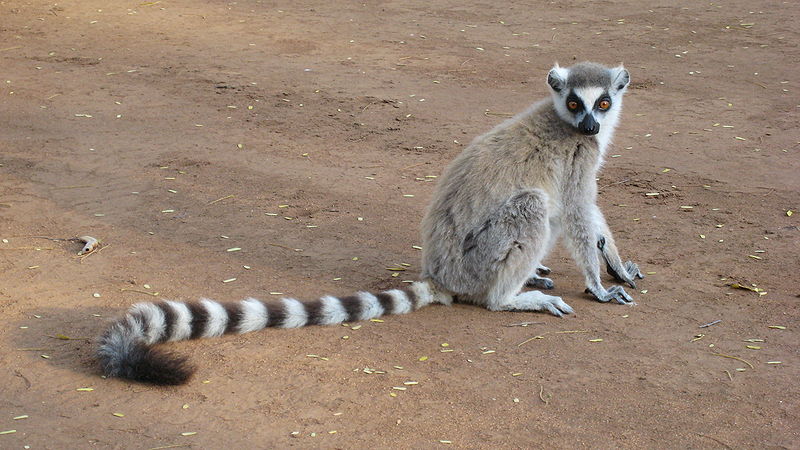 Source: Wikipedia Det viser sig, at Richard Branson har en ny idé; at gemme det ring-tailed lemur (Lemur catta) ved importing them to his private British Virgin Island. Som artiklen påpeger Branson brugt millioner af pounds og års indsats for at gøre øen til “the most ecologically friendly island in the world”. But it appears Mr Branson has decided to forgo conservation science and rewrite it in a more PR friendly way. In come the lemurs despite the cautions of his own ecological assessment because he wants “…to create a second island habitat and the conditions on Moskito are perfect.” Perhaps Branson has a bizarro world dictionary where the definition of the word perfect is “something completely dissimilar from the original”.
OK sure, at first the idea sounds like a fine one – the lemurs are endangered, why not try to give them a second wild refuge? Godt, Dr James Lazell of the Conservation Agency has had 31 years experience in the Virgin Islands and has pointed out that “Lemurs are agile, dexterous, aggressive, omnivorous animals that could have a detrimental effect on these simple island ecologies. They eat absolutely everything – lizards, fruit, roots, insekter, birds’ eggs.” Oh but don’t worry, nothing bad can happen when you introduce primates to an island (introduced primates devastate Florida Key). Branson knows that the lemurs will only “take the odd gecko” (like the rare endemic dwarf-gecko Sphaerodactylus parthenopion), not to mention they probably won’t spread to other islands since they “hate swimming” (ring tailed lemur swimming).
So why then the ring-tailed? Not because it is the most endangered (Der er lots of other more endangered lemurs), but because it is the most iconic. That is what really drives me up the wall about this ridiculous idea. Not only is he naively introducing a possibly invasive species into a sensitive island habitat – but because he is spreading a false message of conservation. Like a slow child Branson has rushed to the ring-tailed to save it while completely missing the entire idea behind conservation. The ring-tailed is a flagship species, one that draws attention to the devastation that is occurring in Madagascar. One cute cuddly animal to represent the staggeringly unique and diverse habitats of its homeland. But not if Richard Branson has anything to say about it. Why bother protect Madagascar when you can swoop in and create a new home for a primate everyone loves? Pyha, crisis averted. Richard fiddles while Madagascar burns.
I suspect this freakish island zoo is simply masquerading as conservation and the real incentive behind it is commercial. Over the next few years there will be a handful of “luxury, carbon-neutral homes built on the island”. A pretty brilliant scheme to incentivize the purchase of homes that undoubtedly will cost tens of millions of dollars each – and you can pretend to feel good about protecting the world while you do it. After all the Virgin Islands lack any charismatic wildlife; nature sure does a terrible job of creating a billionaires wonderland. What comes next to the island?
Maybe… just maybe… Branson has Dr. Moreau moving in first.
Af Chris Grinter, den 18. april, 2011 A few weeks ago I was invited to join a Berkeley entomology class out in the field for the weekend. Our destination was the Blue Oak Ranch Reserve; one of the newest reserves to the University of California system located just outside of San Jose on Mount Hamilton (map below). It was a joint spider and beetle class trip, hosted by Charles Griswold og Dave Kavanaugh respectively. And despite a frost on Saturday night we managed to find some interesting insects. You’ve already seen my images of the Scaphinotus (Carabidae), but here is a larger set of images from both myself and colleague and fellow blogger Tamas Szuts.
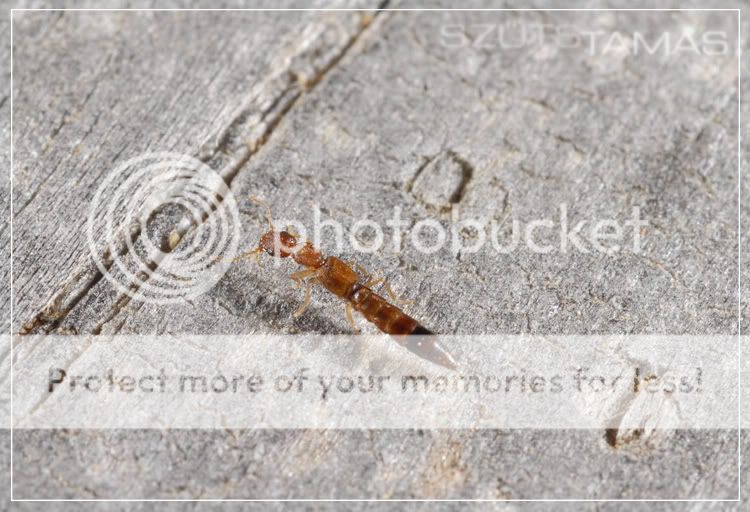 Staphylinidae: Aleocharinae? 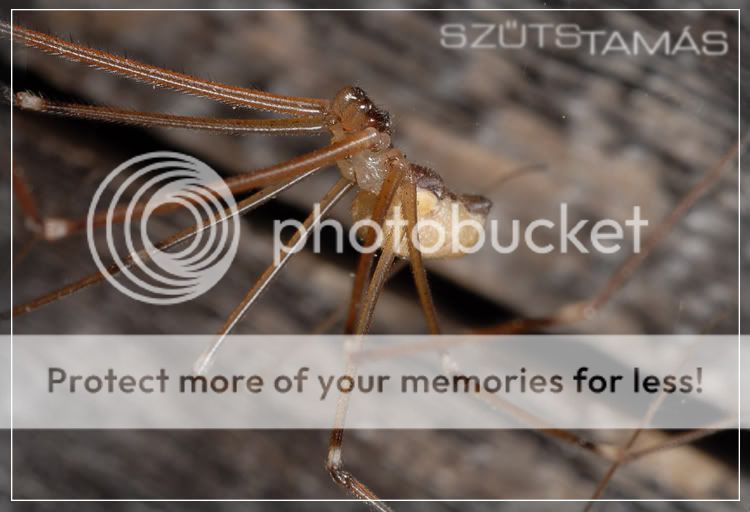 Pholcidae : likely Pholcus sp. 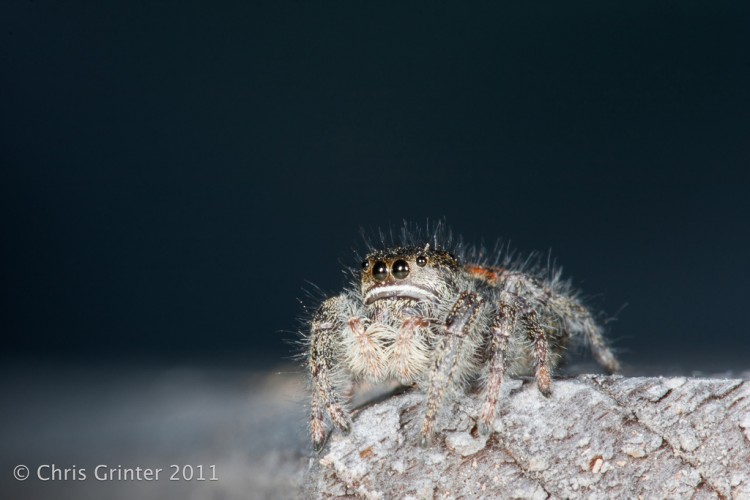 Salticidae: Phidippus sp. Continue reading Blue Oak Ranch Reserve
Af Chris Grinter, den 6. april,, 2011 Okay – et par undskyldninger for ikke at have helbilleder * endnu * af de larver pågældende (Jeg vil i et par dage!). I løbet af weekenden var jeg ude med en gruppe af Berkeley-studerende på Mount Hamilton og PhD kandidat Meghan Culpepper samlet nogle få arter af Scaphinotus og nogle larver! So the specimen from Monday was indeed the larvae of a Scaphinotus beetle feasting inside the shell of a native terrestrial snail. This challenge was a hard one since these predatory Scaphinotus larvae are rarely encountered and there are zero images of out there – and none of them feeding. Better luck next time!
For now, here is an undetermined Scaphinotus species. In the coming weeks I will have 4-5 species photographed and identified (by Meghan) – and the larvae will have to be sequenced for species ID. Stay tuned.
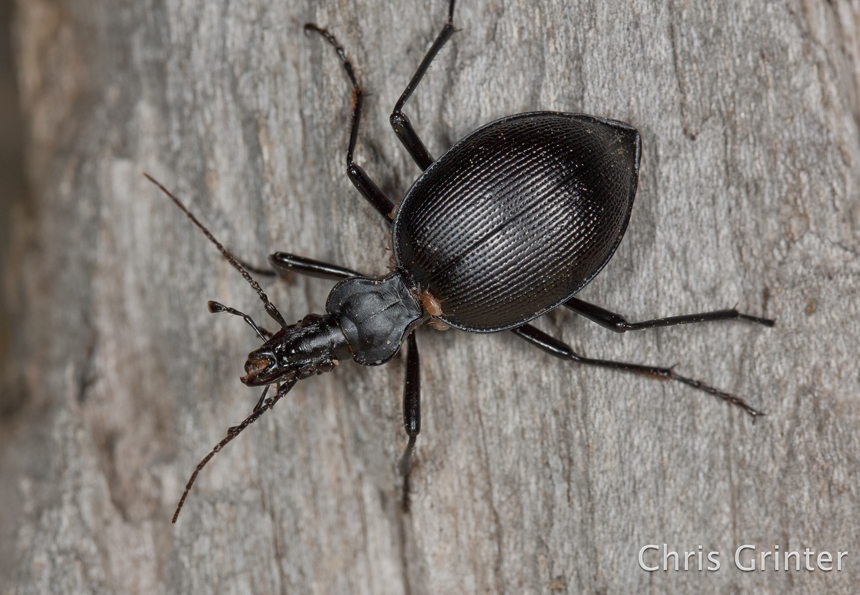
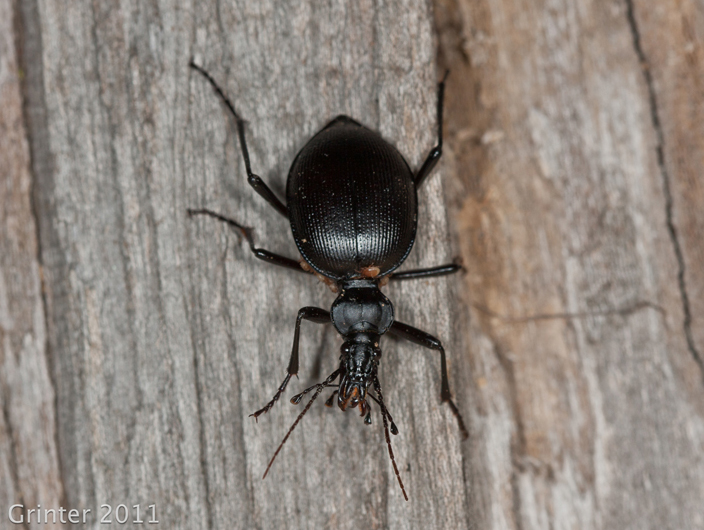
Af Chris Grinter, den 4. april, 2011 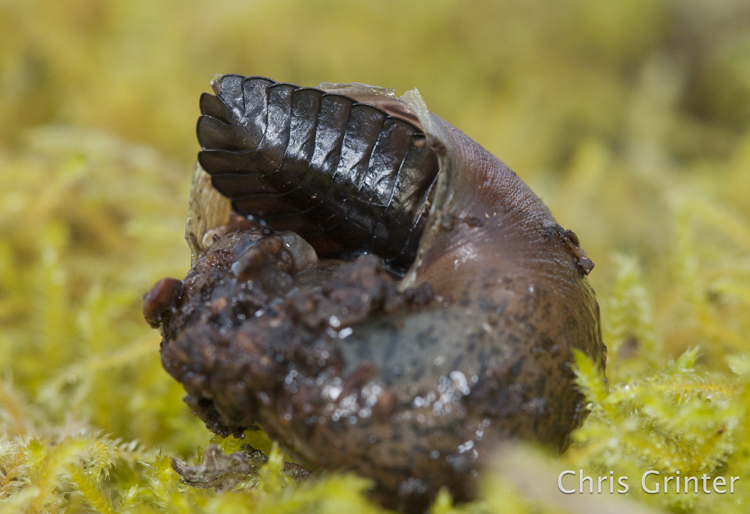
Stødte på denne fyr, mens han var ude i marken den anden dag, hvad sker der her? Point tildelt for orden/familie/slægt – men selv eksperter i denne gruppe kan ikke finde ud af arten endnu.
(alle i feltet med mig bør holde deres kommentarer, indtil gættene kommer ind!)
Af Chris Grinter, den 30. marts, 2011 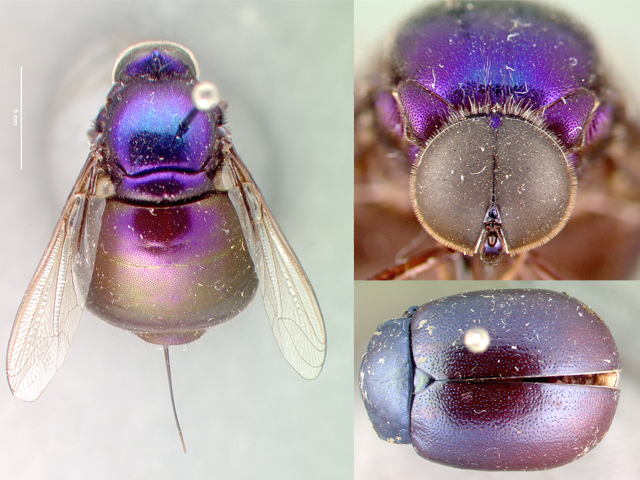 Lasia klettii: Fotos af April Nobile, SAG Lasia klettii: Fotos af April Nobile, SAG
For det meste er fluer ikke et insekt, jeg bliver alt for begejstret for. Men, den gådefulde familie Acroceridae er undtagelsen. Jeg vil begynde at dele nogle interessante slægter fra tid til anden – familiens morfologi er forbløffende forskelligartet. De fleste af mine dage tilbragte på museet med at inventere vores enorme samling af over 16,000 Acorcerider (alias småhovedede fluer). Det lyder måske ikke alt for imponerende, når du sammenligner det med andre mere rigelige familier (og den blegner i forhold til over 17,500,000 Andet eksemplarer vi har på museet); men det viser sig at repræsentere mange, hvis ikke de fleste, af alle kendte eksemplarer for hele familien. Mens der sandsynligvis er store samlinger af disse fluer i andre institutioner, California Academy of Sciences kan nemt gøre krav på rekorden lige siden modtagelsen af samlingen af Dr. Evert I. rulle (som af og til kommer ind for at arbejde fra museet).
Acrocerider viser sig at være en ret svær gruppe at studere på grund af hvor sjældne de er i naturen, deres parasitoidbiologi, og hvor svære de kan være at fange på vingen. Deres store thorax er spækket med muskler, der skyder fluen gennem luften – så hvis du ikke fanger dem ved en blomst, længes du efter en malaisefælde. Ev fortalte mig en historie om at lære at fange disse på fløjen i Costa Rica. Du står i modvind fra en kollega i marken – så snart nogen hører noget glide forbi, du svinger vildt i håb om at fange fluen ved et tilfælde… det virker en gang imellem. Disse fluer er også de eneste kendte endoparasitter af voksne edderkopper (der kan være en registrering af en Tachinid…). Ovenstående slægt, NeoLasia, er en parasit af Theraphosid taranteller (noget som Aphonopelma). Som en larve arbejder fluen sig op ad benene på en edderkop og borer sig ned i maven, hvor den så sætter sig ind ved siden af boglungen og prikker et lille åndehul.. Så venter den tålmodigt på, at edderkoppen nærmer sig modenhed. Med hun-taranteller, fluen kunne være i dvale i årtier. Til sidst sker der noget, der ligner filmen Aliens, og larverne lever af edderkoppens indre organer dukker derefter op for at forpuppe sig. Men at finde ud af, om en edderkop har en parasit eller ej, er umuligt uden en dissektion – så store samlinger af levende edderkopper skal vedligeholdes for at opnå værtsposter. Parasitoid biologi er bare så cool.
Ovenstående eksemplar (Lasia klettii en ny, unavngivne, arter) blev samlet ind 1977 af Schlinger nær byen Alamos, Mexico – på blomster med den sandsynlige mimikmodel, en Chrysomelidae bille (bille mennesker, alle ideer ud over familien?).
Af Chris Grinter, on March 24th, 2011 Better be careful of what you do while out in the countryside. Farms can be dangerous places, especially if you’re a photographer. Proposed legislation in Florida, titled simply “farms”, is attempting to make photography or drawings in, on or af a farm without explicit written consent a first degree FELONY (op til 30 years in prison). What could possibly be the justification for this legislation? Journalist Barry Doyle suggests the good Senator is tightly in the pockets of Agribusiness – looking out for those poor farmers who are targeted by animal rights groups or even worse – human rights groups! I tend to concur, this legislation is a disgusting piece of corruption. It gets pretty bad:
(2) A person who photographs, video records, or otherwise produces images or pictorial records, digital or otherwise, at or of a farm or other property where legitimate agriculture operations are being conducted without the written consent of the owner, or an authorized representative of the owner, commits a felony of the first degree…
I strongly encourage any of my Florida readers to write to Senator Norman and express your absolute disgust in his legislation.
14031 N. Dale Mabry Blvd.
Tampa, FL 33618
(813) 265-6260
Senate VOIP: 41200
I also encourage everyone else everywhere else to write to your US representative and exclaim your outrage over this possible violation of first amendment rights (only a proposed violation at this moment).
And just for good measure, here is a bad cellphone picture I took while in Oregon with lots of farms.
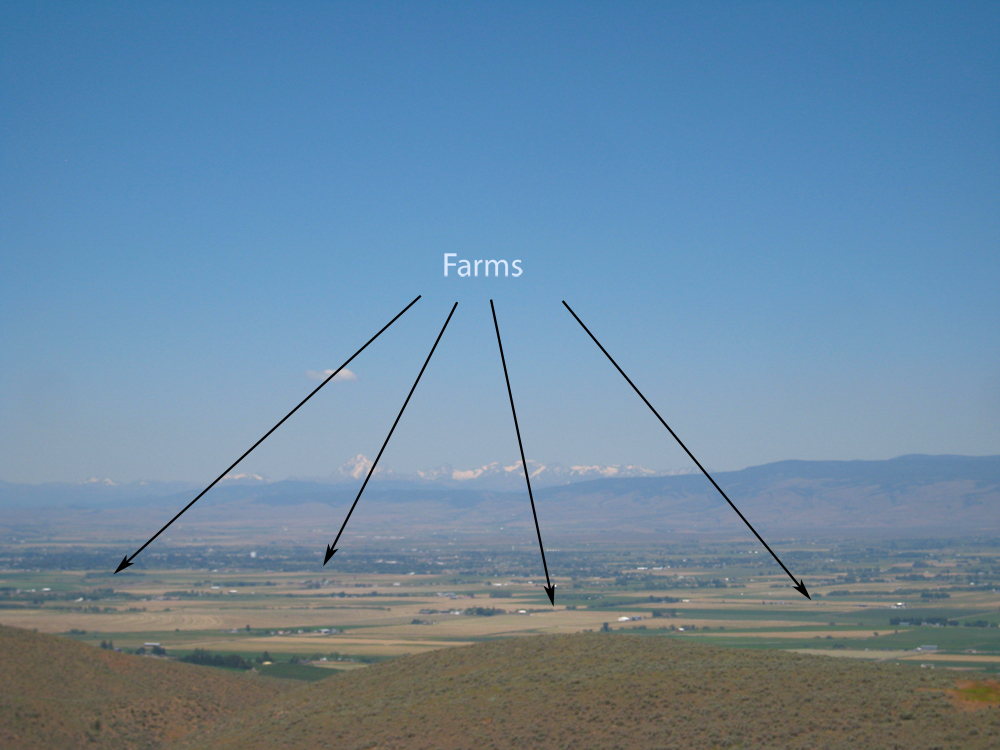
Af Chris Grinter, on March 22nd, 2011 Usually I come across horrible entomology articles regularly enough that I save a backlog for future series. This hasn’t been the case over the last few weeks, I haven’t come across the normal array of terrible media crud. Maybe I just get jaded and stop looking as carefully – but this week I even came across a moth related correction from the Maui News. They fixed their error, but must have deleted the original article…
And for this week I found denne artikel with the image below. Should be pretty easy to spot the weirdness (they do at least manage to point out that the moth is ikke the LBAM (light brown apple moth)).
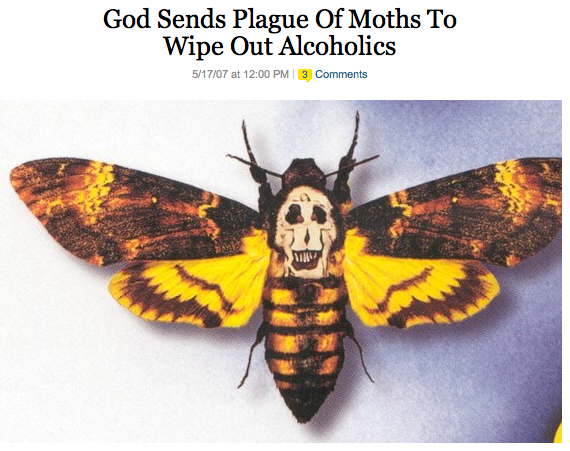
Af Chris Grinter, på 18 marts, 2011 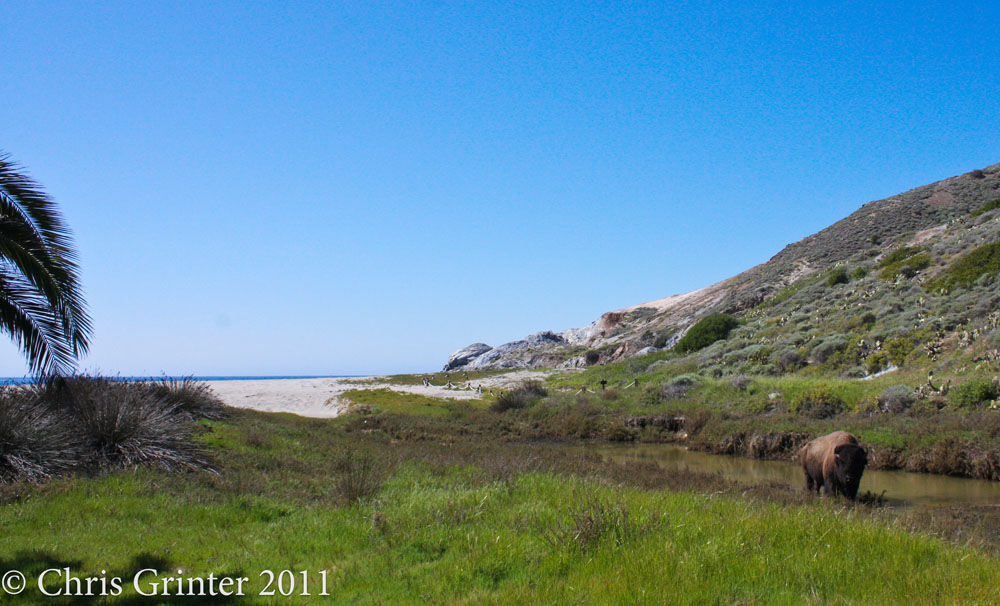
Perhaps the only place in the world where you can find an American bison (vs. buffalo) standing near a beach next to a palm tree. The week on Santa Catalina was an wonderful one, and despite a cool spring with a few unseasonable frosts, some decent collecting was done. Here are just a few amusing images and you’ll notice one thing right away: no fields of wildflowers! As it turns out, almost a century of goat, pig and bison grazing has left mostly grass and cactus on the island. At one point there were over 1000 bison and countless herds of goats; it’s a wonder anything survived at all! I dag, there are thankfully only a modest ~200 bison left that are even on birth control (you guessed it, you can’t shoot the damn things since people “love” them – just like the stupid eucalyptus you can’t cut down). I 1924 a small heard of bison were brought over to shoot the movie The Vanishing American. Naturligvis, the project went over budget, the scene was cut and the animals were let loose instead of paying to return them home. 80 years later and you’re left with an island you can only fight to “conserve” and not restore. Sad fact is that we have no clue what the island actually used to be like. It’s even hypothesized that the endemic island fox (of which we saw 6!) was brought over by indigenous peoples a few thousand years ago from neighboring islands. I guess it’s in our nature to mess with our environment.
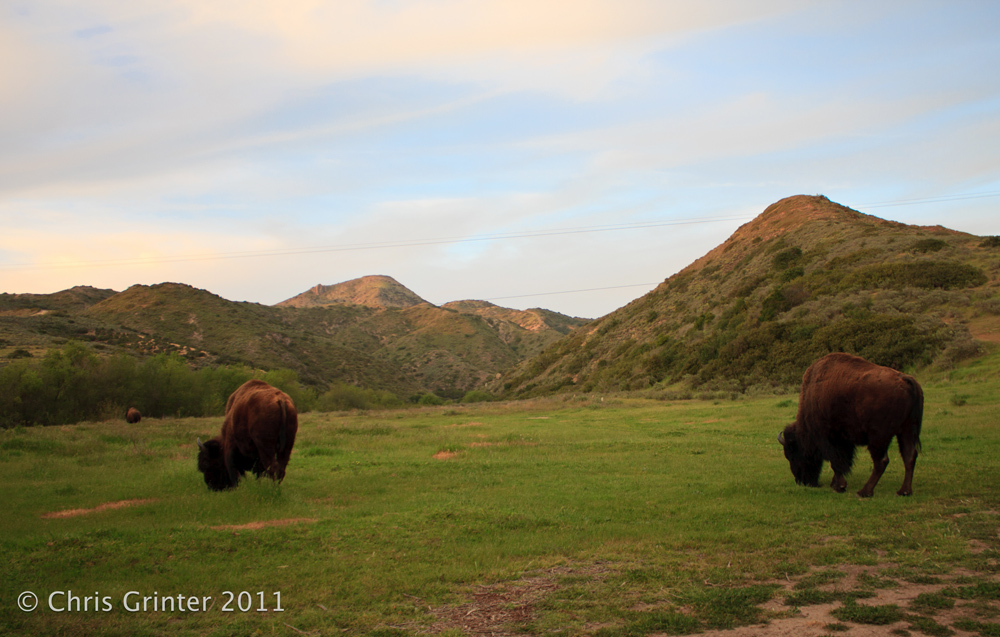
As I was photographing the above, this beast walked up behind me. It wasn’t running, I was!
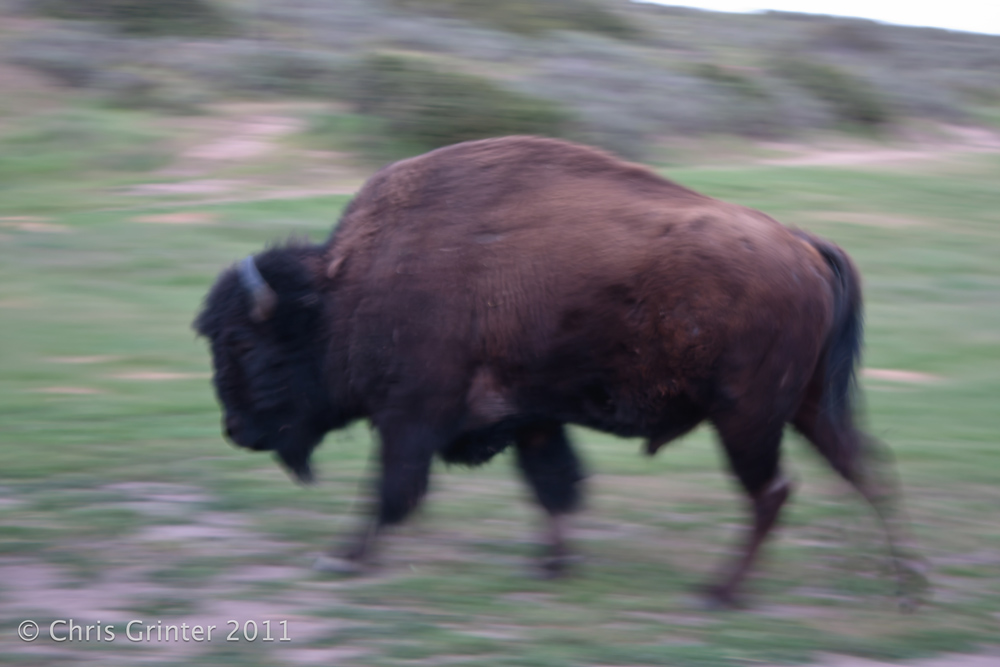
Af Chris Grinter, 8. marts, 2011 [cetsEmbedGmap src = http://maps.google.com / maps?ll = 33.393039, -118,416824&spn = 0.359452,0.715485&t = h&z = 11 width = 600 height = 330 marginwidth = 0 marginheight = 0 frameborder = 0 scrolling = auto]
I morgen er jeg ud for en 10 dag indsamle tur ned til Catalina Island. Jeg har været så heldig at blive inviteret til at deltage i Dr. Jerry Powell fra UC Berkeley på et møl-undersøgelse, og det vil være min første gang til en af de øer. Kanaløerne er kendt for deres høje niveauer af Endemisk, og ingen er mere berømt end den Channel Island Fox. Der er også en håndfuld af endemiske sommerfugle og natsværmere, at jeg vil være i håb om at finde, men i det mindste jeg ved det er wildflower sæson, og jeg har fået mit kamera primet.
Jeg vil sandsynligvis have ringe eller ingen adgang til internettet, mens opholder sig på øen, så hænge stram for en uge. Havde planlagt jeg fremad jeg ville have planlagt stillinger eller en gæst forfatter! Undlad venligst ophold tuned for nogle af mine første billeder af 2011 feltsæson.
Af Chris Grinter, den 3. marts, 2011 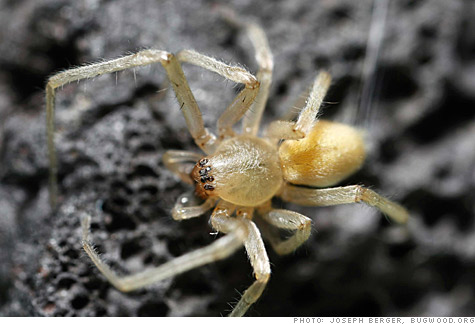
Tilsyneladende something in the Mazda 6 fuel line is warm and inviting for the yellow sac spider, nok, så at de opbygger webs over ventilationssystemer i 4 cylinder køretøjer (og ikke den 6!). Problemet er blevet betragtet som en “spider angrebets” af bil selskab, and the clogged vent lines then can lead to a cracked gas tank and the possibility of a fire.
“A certain type of spider may weave a web in the evaporative canister vent line and this may cause a restriction of the line”
So far only 20 cases are confirmed, but this problem is prolific enough that it has lead to a recall of over 52,000 sedans! I think it’s high time the major car companies hire entomology consultants – efter alle, my retainer would be a lot less than the cost of that recall…
I consulted with our resident team of arachnologists here at the SAG, and the above image does appear to be a sac spider. It’s too hard to tell from the image, but it’s probably not an egregious taxonomic failure.
|
Skepsis
|














